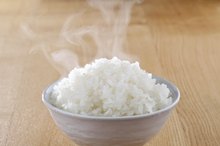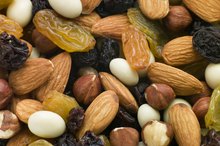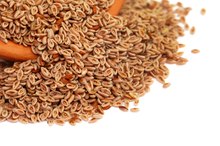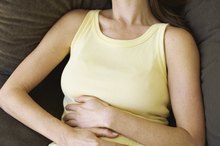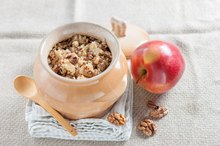What does fact checked mean?
At Healthfully, we strive to deliver objective content that is accurate and up-to-date. Our team periodically reviews articles in order to ensure content quality. The sources cited below consist of evidence from peer-reviewed journals, prominent medical organizations, academic associations, and government data.
- National Digestive Diseases Information Clearinghouse: Diverticulosis and Diverticulitits; July 2008
- National Institutes of Health: MedlinePlus: Diverticulosis and Diverticulitis
The information contained on this site is for informational purposes only, and should not be used as a substitute for the advice of a professional health care provider. Please check with the appropriate physician regarding health questions and concerns. Although we strive to deliver accurate and up-to-date information, no guarantee to that effect is made.
Can You Eat Celery & Blueberries If You Have Diverticulosis?
Diverticulosis is a condition that occurs when the lining of your large intestine and colon begin to develop pouches that bulge out in the weak areas. While diverticulosis usually has no symptoms, over time these bulges become inflamed, irritated and painful. When painful symptoms develop your condition has become diverticulitis, according to the National Institutes of Health 1. The food you eat can have an impact on your condition. There are certain foods to avoid while you are suffering from an attack and these include fibrous foods like celery and blueberries.
Significance
The National Digestive Diseases Information Clearinghouse reports that half of Americans over 40 have a diverticular disease. The condition is more common with age as half of all Americans 60 years and older are afflicted by the condition. Having diverticulosis can be painful and may even cause an infection, tear and bleeding of the lining.
Dietary Restrictions
Diverticulitis & Colitis Diet
Learn More
You may want to consider following certain dietary restrictions when you are experiencing diverticulosis. The idea behind a diverticulosis diet is to limit your food intake to soft, liquid and low fiber foods. Celery and blueberries both contain a significant amount of fiber, so they may not be the best choice for eating with diverticulosis. Limiting the fiber in your diet can help reduce the severity of your symptoms and improve your prognosis.
- You may want to consider following certain dietary restrictions when you are experiencing diverticulosis.
Celery and Blueberries
One cup of chopped, raw celery contains 1.6 grams of fiber. One cup of raw blueberries has 3.6 grams of fiber. If you wish to eat these foods, you can slowly phase them back in as your symptoms subside. Since most vegetables and fruits are considered to be high-fiber foods, including celery and blueberries, your doctor may recommend limiting these until your disease is under control.
- One cup of chopped, raw celery contains 1.6 grams of fiber.
- Since most vegetables and fruits are considered to be high-fiber foods, including celery and blueberries, your doctor may recommend limiting these until your disease is under control.
Eating For Your Condition
Can You Eat White Rice With Diverticulitis?
Learn More
A high-fiber diet can be very beneficial for you and your digestive tract when your diverticulosis is being managed. A high-fiber diet can aid in the prevention of diverticulosis. When your disease is improved, try to incorporate as much fiber as you can. The American Diabetes Association reports that men should consume between 30 and 38 grams of fiber per day, and women should consume between 21 and 25 grams of fiber per day. Talk to your doctor to gain a better understanding of your dietary and fiber needs.
- A high-fiber diet can be very beneficial for you and your digestive tract when your diverticulosis is being managed.
- Talk to your doctor to gain a better understanding of your dietary and fiber needs.
Related Articles
References
- National Institutes of Health: MedlinePlus: Diverticulosis and Diverticulitis
- Wald A. Patient Education: High-Fiber Diet (Beyond the Basics). UpToDate. Updated September 14, 2018.
- Dahl WJ, Stewart ML. Position of the Academy of Nutrition and Dietetics: Health Implications of Dietary Fiber. J Acad Nutr Diet. 2015;115(11):1861-70. doi:10.1016/j.jand.2015.09.003
- Cleveland Clinic. Improving Your Health With Fiber. Updated April 15, 2019.
- Müller-lissner SA, Kamm MA, Scarpignato C, Wald A. Myths and misconceptions about chronic constipation. Am J Gastroenterol. 2005;100(1):232-42. doi:10.1111/j.1572-0241.2005.40885.x
- Canadian Society for Gastrointestinal Research. Diarrhea and Diet.
- Chen C, Zeng Y, Xu J, et al. Therapeutic effects of soluble dietary fiber consumption on type 2 diabetes mellitus. Exp Ther Med. 2016;12(2):1232–1242. doi:10.3892/etm.2016.3377
- Ch'ng CL, Jones MK, Kingham JG. Celiac disease and autoimmune thyroid disease. Clin Med Res. 2007;5(3):184–192. doi:10.3121/cmr.2007.738
- Brum JM, Gibb RD, Peters JC, Mattes RD. Satiety effects of psyllium in healthy volunteers. Appetite. 2016;105:27-36. doi:10.1016/j.appet.2016.04.041
- McRorie JW Jr. Evidence-Based Approach to Fiber Supplements and Clinically Meaningful Health Benefits, Part 2: What to Look for and How to Recommend an Effective Fiber Therapy. Nutr Today. 2015;50(2):90–97. doi:10.1097/NT.0000000000000089
Writer Bio
Laura Niedziocha began her writing career in 2007. She has contributed material to the Stoneking Physical Therapy and Wellness Center in Lambertville, N.J., and her work has appeared in various online publications. Niedziocha graduated from Temple University with a Bachelor of Science in exercise science. She also has her Associate of Arts in communications from the Community College of Philadelphia.

